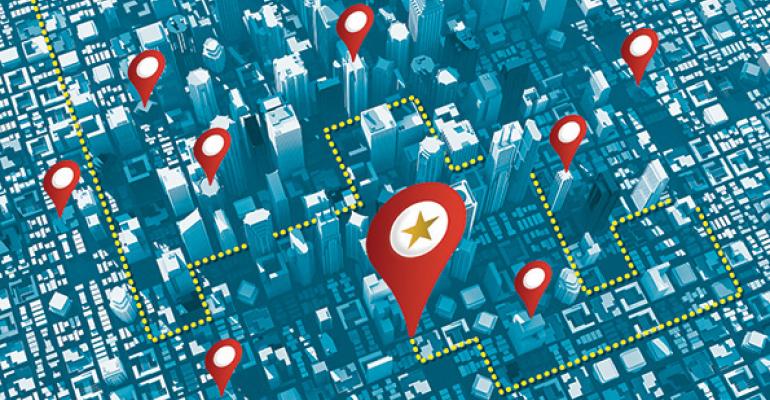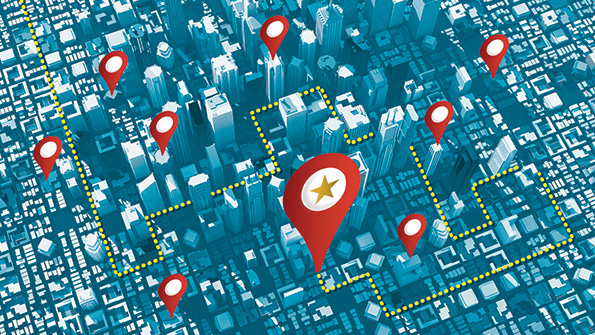
Faced with stagnant traffic trends — and lukewarm projections for the coming years — industry experts say the operators that will succeed are the ones who creatively and aggressively court consumers at every opportunity.
Operators are already tapping a variety of high-tech and traditional tools to attract new customers and convince existing ones to visit more frequently, including mobile ordering, streamlined operations, loyalty programs, buzzworthy limited-time offers and more.
But just as important as staying up on the latest tools is knowing how to use them to target potential customers at key decision-making points. The traditional static demographic lines — age, background or income — only tell part of the picture, as what a given customer wants can change from moment to moment. Instead, opportunity lies in serving customers’ various “need states” — whether they want a quick coffee on the way to the office, a romantic anniversary dinner, or simply to satisfy a rumbling stomach.
“It’s not so much who the people are, but their need states. It’s the occasion drivers,” said Dennis Lombardi, foodservice strategist for Dublin, Ohio-based WD Partners, a consulting company.
Those needs can be generally grouped into three categories: destination-driven consumers, who make a deliberate trip to a restaurant for a special occasion or event; routine users, who frequent restaurants that fit into their daily habits; and impulse buyers, who decide on the fly to grab a bite or give in to an urgent craving.
“Each of us is all three of those [at one point],” Lombardi added.
All of these scenarios yields opportunity for operators — if they know how to tap into it. In the following pages, NRN explores these three purchasing behaviors and offers tactics restaurant operators can use to satisfy consumers’ unique needs and earn their business.
Winning over destination customers
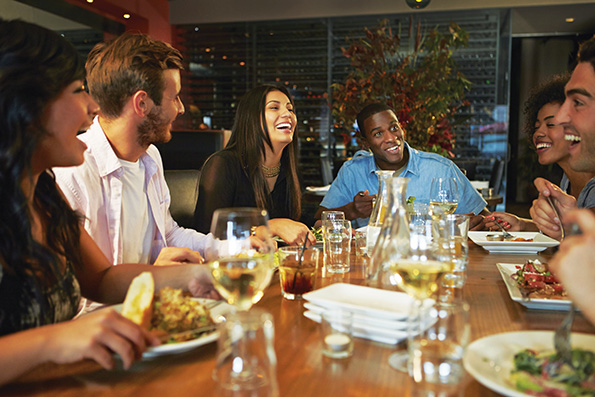
When major life moments occur, consumers love to mark the occasion by breaking bread at restaurants. But even a casual occasion that spurs a customer to deliberately research and choose a restaurant is an opportunity to build traffic and loyalty, whether its a fantasy football gathering, a trivia night or a family dinner.
Destination customers are often in a state of mind to spend more, yielding higher check averages and bigger tips for servers. If the guest leaves the destination visit with a good impression, it can turn into strong word-of-mouth marketing in social media channels and often can lead to repeat visits.
Improve service
Because special occasion visits are likely less frequent, diner expectations can be high.
“You have to make the experience match the expectations for what is probably an atypical occasion,” Lombardi said.
Boston Market, for example, completed a six-month-long rollout of a “Guest Service Excellence” program at its 460 restaurants, and Tony Buford, the chain’s executive vice president of operations, said this month that the brand saw its customer service scores increase by 6 percentage points over last year. And happy customers are the ones that return.
Monitor your online reputation
When diners are deciding where to dine, often the first thing they do is search for the restaurant online. What they find can have a big impact on their choices.
A 2011 Harvard Business School study found that a boost of one full star in a restaurant’s Yelp score could lead to a 5 percent to 9 percent increase in revenue.
Consultant Aaron Allen, chief executive of Orlando, Fla.-based Aaron Allen & Associates urges operators to make sure they are listed and, if possible, enhanced for search-engine optimization, or SEO, to attract tech-savvy destination consumers.
Create your own events
Restaurants and bars have found programming for special events can help make their locations into destinations. Buffalo Wild Wings kicked off football season by offering coupons and rewards to groups of eight or more who registered to hold fantasy football draft parties at the restaurants or bought more than $100 in takeout.
Ty Sullivan, director of marketing at New York-based S.T Management Group, does trivia nights at smaller bars and restaurants in his Queens neighborhood.
Event nights featuring live-hosted trivia now draw 12 to 14 teams of three to four people each.
“I moved the time to dinner hour so we could ... boost check averages,” he said. “It was a raging success and the regulars return and
the word of mouth spreads with minimal work.”
Winning over routine customers
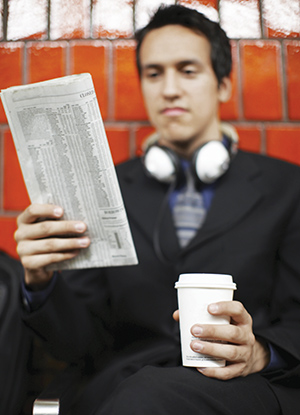 From the morning stop for coffee and a bagel to the standing Saturday dinner and a movie, routine customers offer a solid opportunity for operators to build frequency. Customers tend to have a mental shortlist of brands to choose from for their regular visits, and staying top of mind is key to increasing routine occasions. Location is a key factor too. In fact, The NPD Group recently found that the No. 1 driver for repeat visits is convenient location. Routine customers make up the bread and butter of a restaurant’s bottom line. Bonnie Riggs, NPD’s restaurant industry analyst, said a September report found that “on average about a third of buyers make up about 60 percent of traffic volume.” Those repeat visits can be influenced more by strong loyalty programs and even fresh, healthy menu items than by deals or special offers. And those repeat visits are integral to an operation’s success.
From the morning stop for coffee and a bagel to the standing Saturday dinner and a movie, routine customers offer a solid opportunity for operators to build frequency. Customers tend to have a mental shortlist of brands to choose from for their regular visits, and staying top of mind is key to increasing routine occasions. Location is a key factor too. In fact, The NPD Group recently found that the No. 1 driver for repeat visits is convenient location. Routine customers make up the bread and butter of a restaurant’s bottom line. Bonnie Riggs, NPD’s restaurant industry analyst, said a September report found that “on average about a third of buyers make up about 60 percent of traffic volume.” Those repeat visits can be influenced more by strong loyalty programs and even fresh, healthy menu items than by deals or special offers. And those repeat visits are integral to an operation’s success.
“To be able to grow your business, it really will have to come from building loyalty, building repeat business,” Riggs said.
Send special occasion offers
Track the anniversaries, birthdays and other special events in loyal customers’ lives with a simple database, and e-mail special offers as those occasions grow near.
In addition, operators can even create spontaneous events for their frequent customers.
During an unusual last-minute snowstorm in Texas last winter, for example, Chamberlain’s Seafood restaurant in Addison, Texas, sent an e-mail to loyal guests, letting them know the restaurant would be open and offering a special price on a lobster meal.
Act locally
“Connecting with the neighborhood and having a lot of awareness by people in the neighborhood is important,” WD Partners’ Lombardi said. “It’s a lot more than sponsoring the local Little League team.”
Restaurants near office buildings can find success by offering one-time trial discounts or samples to the daytime business occupants or providing door hangers for special offers at residences nearby.
Build social skills
Social media should be considered a part of local, neighborhood-based marketing now, Lombardi said.
“I would want to know [who is] five to 10 minutes away from my restaurant,” he added. “I’d be sampling and couponing to get people to come into the store.”
By following specific locations on Facebook, Foursquare, Instagram and Swarm, operators can find out who frequent visitors are and even comment or repost favorable mentions.
Offer recognition
The digital era has enabled sophisticated new ways to monitor and reward frequent customers.
Panera Bread, for example, links its loyalty program to a card or a phone number and offers freebies when patrons reach loyalty benchmarks. Dunkin’ Donuts’ DDPerks Rewards Program, which has nearly 1.3 million members, rewards guests with points for their purchases, free coffee on their birthdays and other members-only bonuses. Starbucks’ mobile app offers rewards on birthdays and for various numbers of loyal visits by crediting patrons’ accounts directly.
Provide “in-the-know” offers
Operators can deepen the loyalty of routine consumers by rewarding guests who have insider information.
Starbucks debuted its popular Pumpkin Spice Latte Sept. 2 this year, but guests who decoded clues from a special Tumblr page could begin ordering it a week earlier.
A number of other chains, including In-N-Out Burger and BurgerFi, feature “secret” menus that enable diners to show off their insider status and can make customers feel like part of the restaurant family.
Offer access
“Restaurant brands can [give consumers] that sense of being special,” consultant Allen said.
Casual-dining chain Carrabba’s Italian Grill this past spring offered e-mail club members an early look at some new menu items. The 240-unit Carrabba’s chain held “First Tastes” events at more than a dozen restaurants nationwide, recruiting members of its “Amici Club.” Attendees then spread the word by sharing their experiences on social media.
Winning over impulse customers
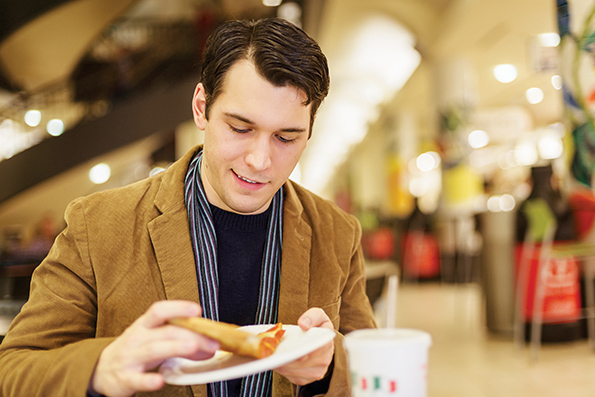
Impulse-driven visits tend to be made by customers making dining decisions on the spot, whether they’re looking for anything that will satisfy their hunger or feel the need to indulge a sudden craving.
“If you see some kids selling lemonade on the corner and you pull over,” WD Partners’ Lombardi explained, “That’s the impulse buy.”
The price point that affects the buying decisions generally is lower than for the routine and destination customers, tending more toward snack or treat items than full meals.
Visibility is key to catching these consumers’ attention — and earning their business, Lombardi noted.
These customers are particularly valuable because they offer incremental sales increases on top of typical consumers, whether it be for a specialty drink or a signature dessert item, industry observers said.
Start sampling
A taste of a quality product will convert interest to trial at a higher rate than any form of paid advertising, consultant Allen said. This tactic can be particularly effective for restaurants in areas with a lot of pedestrian traffic.
Many Starbucks locations near closing time will offer customers in the store a free sample of a cake pop that’s nearing its expiration date or some other sweet or dessert. The gesture costs the store little and helps create a loyalty bond that could potentially pay off in return visits.
Play to the senses
Smells are generally the most memorable of all the senses, Allen said. “In impulse buys, 75 percent of human emotion is triggered by the sense of smell,” Allen said.
A master at leveraging appealing aromas is Cinnabon. Loryn Franco, senior manager of public relations and communications for the Atlanta-based brand, said, “We definitely capitalize on our irresistible aroma. We bake all day long,” and ovens are strategically placed near the entrance.
Tap into “scarcity marketing”
Limited-time offers are already widely used, but Allen reminds operators not to underestimate the power of scarcity to create a “need-it-now” mentality that will drive impulse purchases. He cited the $800 million in sales of Starbucks’ seasonal Pumpkin Spice Latte since it was introduced in 2003.
Other iconic examples of scarcity marketing, which have become something of cults unto themselves, are McDonald’s St. Patrick’s Day-timed Shamrock Shake and its now-you-see-it, now-you-don’t McRib.
Go digital
Some studies have shown digital menu boards can deliver a 28 percent lift in sales. “With digital menus and digital menu boards, you are able to take motion, which is a very powerful merchandising medium, and make it stand out in a room,” Allen said.
Fayetteville, Ark.-based Slim Chickens recently began converting to digital menu boards at its 14 units. Co-founder Greg Smart said the board populates with new content every five minutes and the company has seen dessert sales double and drive-thru times decrease, a throughput improvement that he credited to easier-to -read menus.
Make purchases effortless
“You can never make it too easy to buy from you,” Allen said, citing payment processing innovations such as mobile payment, pay-at-the-table and advance ordering. Allen said,“The frictionless interaction can help consumers make the impulse buy with the fewest clicks possible.”
One of the biggest such initiatives launches in October with Apple’s iPhone 6 and Apple Watch. The proprietary one-touch payment system, called Apple Pay, could be a game-changer for mobile payments.

